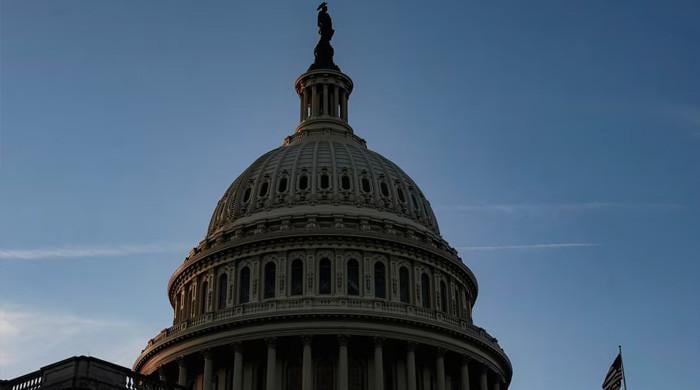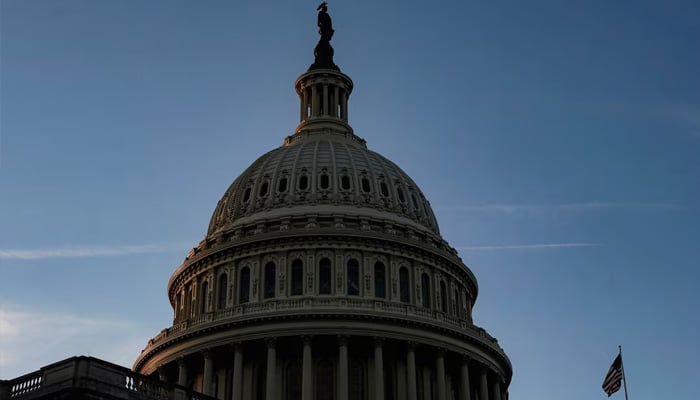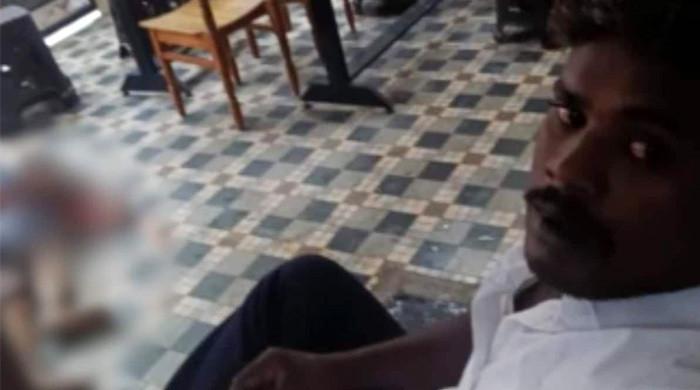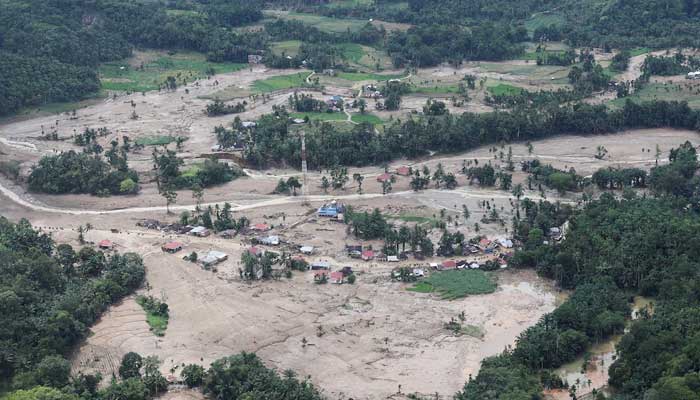Politics
Bid to end shutdown fails in Senate; US president freezes aid to Chicago


- Trump freezes at least $28bn in funds for Democratic areas.
- Pritzker says that amounts to hostage taking.
- Bid to reopen government fails in Senate as both sides dig in.
US President Donald Trump’s administration froze $2.1 billion in Chicago transit funding on Friday, starving another Democratic city of funds as a bid to end the government shutdown failed again in the Senate.
On the shutdown’s third day, Trump ramped up pressure on Democrats to end the standoff and agree to a Republican plan that would restore government funding. But that failed in a 54-44 Senate vote, short of the chamber’s 60-vote standard, ensuring that the shutdown will last until at least Monday.
The administration has now frozen at least $28 billion in funding for Democratic cities and states, escalating Trump’s campaign to use the extraordinary power of the US government to punish political rivals. Budget director Russ Vought said the Chicago money, earmarked for elevated train lines, had been put on hold to ensure it was not “flowing via race-based contracting.”
Trump has made Chicago, the nation’s third-largest city, a regular rhetorical punching bag and has threatened to send in National Guard troops.
Illinois Governor JB Pritzker, a high-profile Trump critic seen as a possible 2028 Democratic presidential candidate, said the funding freeze amounted to hostage-taking.
“It’s attempting to score political points but is instead hurting our economy and the hardworking people who rely on public transit,” he said on social media.
The White House said it was also identifying funds that could be withheld from Portland, Oregon, a left-leaning city that was home to high-profile protests during Trump’s first term.
Trump has also threatened to fire more federal workers, beyond the 300,000 he is forcing out this year, and dozens of agencies have submitted workforce reduction plans, according to a White House source speaking on condition of anonymity.
Concern about ‘bad-faith environment’
Many Republicans say they are not troubled by Trump’s pressure campaign, even though it undercuts Congress’ constitutional authority over spending matters. In addition to cutting funds to Democratic cities, Trump and his allies have taken to posting social media images with cartoon mustaches and sombreros drawn on his Democratic opponents.
“Is he trying to apply pressure?” House of Representatives Speaker Mike Johnson, a Republican, told reporters. “He probably is, yeah. And I applaud that.”
But others say the cuts are complicating efforts to reach a deal that would allow the government to reopen. “If you do that, you’re going to create a bad-faith environment here,” said Republican Senator Thom Tillis, who is involved in informal talks to end the impasse. Tillis has opted not to seek re-election next year.
Trump’s funding freeze so far has targeted transit and green-energy projects, two areas that are championed by Democrats. His administration has also tried to cut counterterrorism funding for Democratic states, which is typically a Republican priority. That has been temporarily blocked in court, and Trump restored $187 million in funding for New York on Friday.
No sign of swift solution
In Washington, the Senate rejected both the Republican funding plan and a Democratic alternative and then adjourned until Monday. The House of Representatives will be out of town all next week, which means it would not be available to vote on any compromise that emerges from the Senate.
If the shutdown stretches past Monday, it will become the fourth-longest in US history. The longest shutdown lasted 35 days in 2018-2019, during Trump’s first term in office.
Trump’s pressure campaign did not appear to sway Democrats. Only three voted for the Republican plan, which would extend funding through November 21, the same number who backed it in earlier votes.
Democrats say any funding package must also expand pandemic-era healthcare subsidies due to expire at the end of December, while Republicans say that issue should be dealt with separately. Those subsidies were passed as part of a 2021 Democratic COVID relief package and now help 24 million Americans pay for coverage. Nearly 8 in 10 Americans support keeping them in place, according to a Kaiser Family Foundation poll.
The standoff has frozen about $1.7 trillion in funds for agency operations, which amounts to roughly one-quarter of annual federal spending. Much of the remainder goes to health and retirement programs and interest payments on the growing $37.5 trillion debt.
Services interrupted
The shutdown, the 15th since 1981, has suspended scientific research, financial regulation, and a wide range of other activities. Pay has been suspended for roughly 2 million federal workers, though troops, airport security screeners, and others deemed “essential” must still report to work.
On Friday, the government did not release its monthly unemployment report, leaving Wall Street guessing about the health of the world’s largest economy.
A prolonged shutdown could disrupt air travel and food aid for millions of Americans, and also force federal courts to close. Federal workers would miss their first paycheck in mid-October if the standoff is not resolved by then.
Politics
Tajikistan says five Chinese nationals killed in cross-border attacks from Afghanistan in past week


- China advises companies, personnel to evacuate border area.
- Embassy says Chinese citizens targeted in armed attack on Sunday.
- Another border attack on Friday killed three citizens: embassy.
Five Chinese nationals have been killed and five more injured in Tajikistan in attacks launched from neighbouring Afghanistan over the past week, Tajik authorities and China’s embassy in the Central Asian country said on Monday.
China’s embassy in Dushanbe, the capital, advised Chinese companies and personnel to urgently evacuate the border area.
It said that Chinese citizens had been targeted in an armed attack close to the Afghan border on Sunday. On Friday, it said that another border attack — which Tajik authorities said had involved drones dropping grenades — had killed three Chinese citizens.
Tajikistan, a mountainous former Soviet republic of around 11 million people with a secular government, has tense relations with the Taliban authorities in Afghanistan. It has previously warned of drug smugglers and illicit gold miners working along the remote frontier.
China, which also has a remote, mountainous border with Tajikistan, is a major investor in the country.
There was no immediate response on Monday from the authorities in Afghanistan to the Tajik statement.
But Afghanistan’s foreign ministry last week blamed an unnamed group, which it said was out to create instability, and said it would cooperate with Tajik authorities.
Tajik President Emomali Rahmon’s press service said on Monday that Rahmon had met with the heads of his security agencies to discuss how to strengthen border security.
It said that Rahmon “strongly condemned the illegal and provocative actions of Afghan citizens and ordered that effective measures be taken to resolve the problem and prevent a recurrence of such incidents.”
Tajikistan endured a brutal civil war in the 1990s after independence from Moscow, during which Rahmon initially rose to power. The country is closely aligned with Russia, which maintains a military base there.
Millions of Tajiks, a Persian-speaking nation, live across the border in Afghanistan, with Tajikistan historically having backed Afghan Tajiks opposed to the Taliban.
Politics
Indian man kills wife, takes selfie with dead body


A man in India’s south brutally killed his estranged wife at a women’s hostel and took a selfie with her dead body, according to NDTV.
The victim, identified as Sripriya, employed at a private firm in Coimbatore, Tamil Nadu, had separated from her husband, Balamurugam, who was from Tirunelveli.
Police said the suspect arrived at the hostel on Sunday afternoon, concealing a sickle in his clothes, and was seeking to meet her.
They had an argument soon after the couple met, and the feud turned into a violent attack by Balamurugan, who drew the sickle and hacked the woman to death.
Furthermore, the police said he then took a selfie with her body and shared it on his WhatsApp status, accusing her of “betrayal”.
The incident spread panic and chaos in the hostel.
Following the brutal murder, the suspect did not escape from the spot but waited until the police arrived, and he was arrested at the crime scene. The murder weapon was recovered.
The initial investigation suggested that he suspected his wife of being in a relationship with another man.
Politics
Southeast Asia storm deaths near 700 as scale of disaster revealed


- Indonesia, Malaysia and Thailand witness large scale devastation.
- At least 176 people perish in Thailand and three in Malaysia.
- Indonesia’s death toll reaches 502 with 508 more still missing.
PALEMBAYAN: Rescue teams in western Indonesia were battling on Monday to clear roads cut off by cyclone-induced landslides and floods, as improved weather revealed more of the scale of a disaster that has killed close to 700 people in Southeast Asia.
Indonesia, Malaysia and Thailand have seen large scale devastation after a rare tropical storm formed in the Malacca Strait, fuelling torrential rains and wind gusts for a week that hampered efforts to reach people stranded by mudslides and high floodwaters.
At least 176 have been killed in Thailand and three in Malaysia, while the death toll climbed to 502 in Indonesia on Monday with 508 missing, according to official figures.
Under sunshine and clear blue skies in the town of Palembayan in Indonesia’s West Sumatra, hundreds of people were clearing mud, trees and wreckage from roads as some residents tried to salvage valuable items like documents and motorcycles from their damaged homes.

Men in camouflage outfits sifted through piles of mangled poles, concrete and sheet metal roofing as pickup trucks packed with people drove around looking for missing family members and handing out water to people, some trudging through knee-deep mud.
Months of adverse, deadly weather
The government’s recovery efforts include restoring roads, bridges and telecommunication services.
More than 28,000 homes have been damaged in Indonesia and 1.4 million people affected, according to the disaster agency.
Indonesian President Prabowo Subianto visited the three affected provinces on Monday and praised residents for their spirit in the face of what he called a catastrophe.
“There are roads that are still cut off, but we’re doing everything we can to overcome difficulties,” he said in North Sumatra.
“We face this disaster with resilience and solidarity. Our nation is strong right now, able to overcome this.”
The devastation in the three countries follows months of adverse and deadly weather in Southeast Asia, including typhoons that have lashed the Philippines and Vietnam and caused frequent and prolonged flooding elsewhere.

Scientists have warned that extreme weather events will become more frequent as a result of global warming.
Marooned for days
In Thailand, the death toll rose slightly to 176 on Monday from flooding in eight southern provinces that affected about three million people and led to a major mobilisation of its military to evacuate critical patients from hospitals and reach people marooned for days by floodwaters.
In the hardest-hit province of Songkhla, where 138 people were killed, the government said 85% of water services had been restored and would be fully operational by Wednesday.
Much of Thailand’s recovery effort is focused on the worst-affected city Hat Yai, a southern trading hub which on November 21 received 335 mm (13 inches) of rain, its highest single-day tally in 300 years, followed by days of unrelenting downpours.
Prime Minister Anutin Charnvirakul has set a timeline of seven days for residents to return to their homes, a government spokesperson said on Monday.
In neighbouring Malaysia, 11,600 people were still in evacuation centres, according to the country’s disaster agency, which said it was still on alert for a second and third wave of flooding.
-

 Sports1 week ago
Sports1 week agoWATCH: Ronaldo scores spectacular bicycle kick
-

 Entertainment1 week ago
Entertainment1 week agoWelcome to Derry’ episode 5 delivers shocking twist
-

 Politics1 week ago
Politics1 week agoWashington and Kyiv Stress Any Peace Deal Must Fully Respect Ukraine’s Sovereignty
-

 Business1 week ago
Business1 week agoKey economic data and trends that will shape Rachel Reeves’ Budget
-

 Politics1 week ago
Politics1 week ago53,000 Sikhs vote in Ottawa Khalistan Referendum amid Carney-Modi trade talks scrutiny
-

 Tech6 days ago
Tech6 days agoWake Up—the Best Black Friday Mattress Sales Are Here
-

 Fashion1 week ago
Fashion1 week agoCanada’s Lululemon unveils team Canada kit for Milano Cortina 2026
-

 Tech1 day ago
Tech1 day agoGet Your Steps In From Your Home Office With This Walking Pad—On Sale This Week






